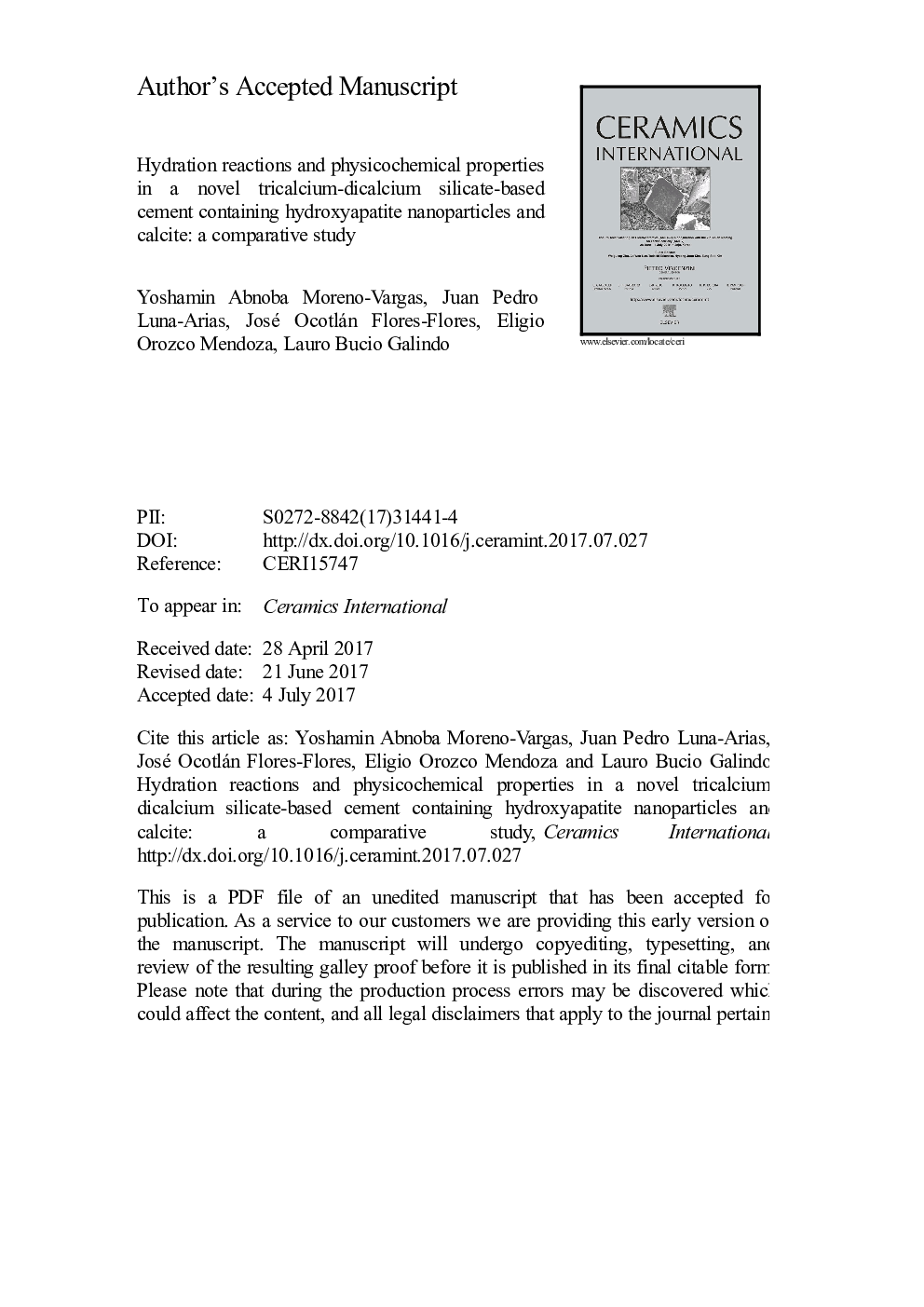| Article ID | Journal | Published Year | Pages | File Type |
|---|---|---|---|---|
| 5437826 | Ceramics International | 2017 | 31 Pages |
Abstract
Hydration reactions were monitored by Raman spectroscopy, X-ray diffraction, radiopacity, pH, setting time, and compressive strength. The compressive strength reaches its higher value at 7 days following the sequence: Biodentine⢠(104.8 MPa) > Cement + 5% nHAp (59 MPa) > MTAAngelus⢠(27.3 MPa), in agreement with the pH values measured at 24 h: Biodentineâ¢, Cements + nHAp or + calcite (10.6-11.6) > MTA-Angelus⢠(9.7). Mean setting times was around 30 min and no significative differences (p = 0.0001) were observed. In the Biodentine⢠control samples, Ca3SiO5 diminishes until disappear at 28 days of hydration. On their turn, calcium silicate hydrate (CSH) increases continuously in the range of time analyzed. The present results suggest that the physicochemical properties were improved for the new cement with nanosized hydroxyapatite nanoparticles and relevant information on chemical properties is of valuable importance for testing predictive models for Biodentine⢠and MTA-Angelusâ¢.
Related Topics
Physical Sciences and Engineering
Materials Science
Ceramics and Composites
Authors
Yoshamin Abnoba Moreno-Vargas, Juan Pedro Luna-Arias, José Ocotlán Flores-Flores, Eligio Orozco, Lauro Bucio,
